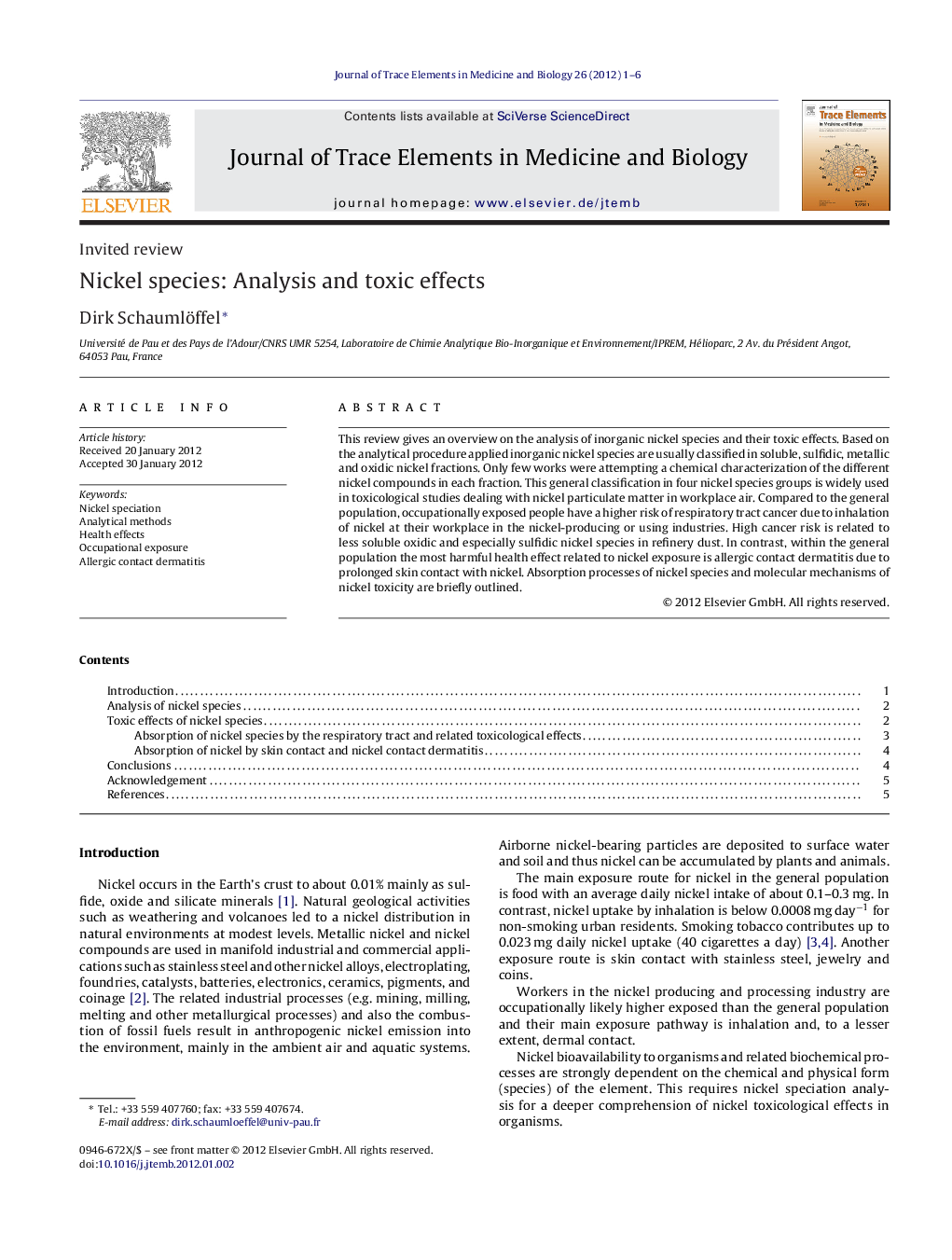| Article ID | Journal | Published Year | Pages | File Type |
|---|---|---|---|---|
| 1226763 | Journal of Trace Elements in Medicine and Biology | 2012 | 6 Pages |
This review gives an overview on the analysis of inorganic nickel species and their toxic effects. Based on the analytical procedure applied inorganic nickel species are usually classified in soluble, sulfidic, metallic and oxidic nickel fractions. Only few works were attempting a chemical characterization of the different nickel compounds in each fraction. This general classification in four nickel species groups is widely used in toxicological studies dealing with nickel particulate matter in workplace air. Compared to the general population, occupationally exposed people have a higher risk of respiratory tract cancer due to inhalation of nickel at their workplace in the nickel-producing or using industries. High cancer risk is related to less soluble oxidic and especially sulfidic nickel species in refinery dust. In contrast, within the general population the most harmful health effect related to nickel exposure is allergic contact dermatitis due to prolonged skin contact with nickel. Absorption processes of nickel species and molecular mechanisms of nickel toxicity are briefly outlined.
